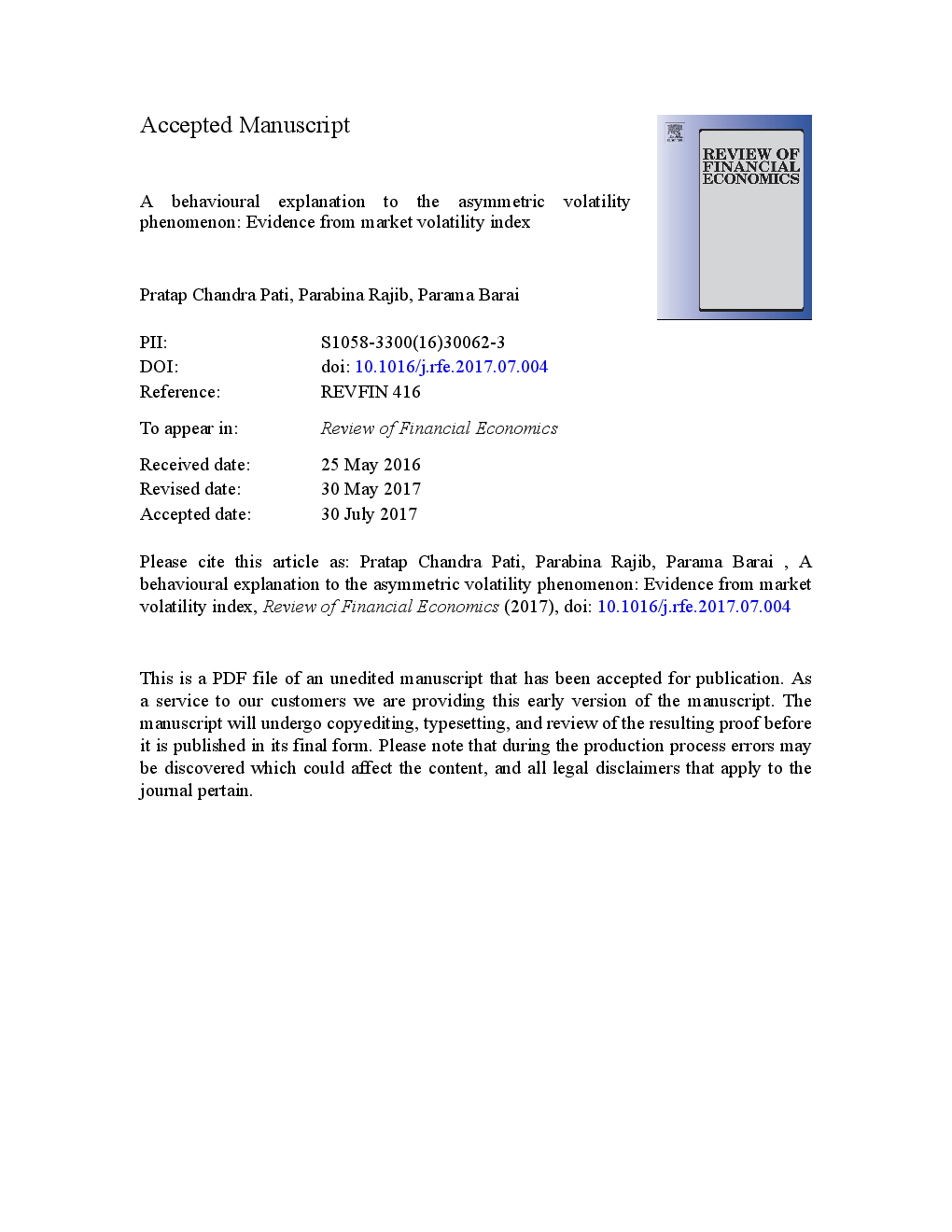ترجمه فارسی عنوان مقاله
توضیح رفتاری برای پدیده نوسانات نامتقارن: شواهد از شاخص نوسان بازار
عنوان انگلیسی
A behavioural explanation to the asymmetric volatility phenomenon: Evidence from market volatility index
| کد مقاله | سال انتشار | تعداد صفحات مقاله انگلیسی |
|---|---|---|
| 101450 | 2017 | 61 صفحه PDF |
منبع

Publisher : Elsevier - Science Direct (الزویر - ساینس دایرکت)
Journal : Review of Financial Economics, Volume 35, November 2017, Pages 66-81

